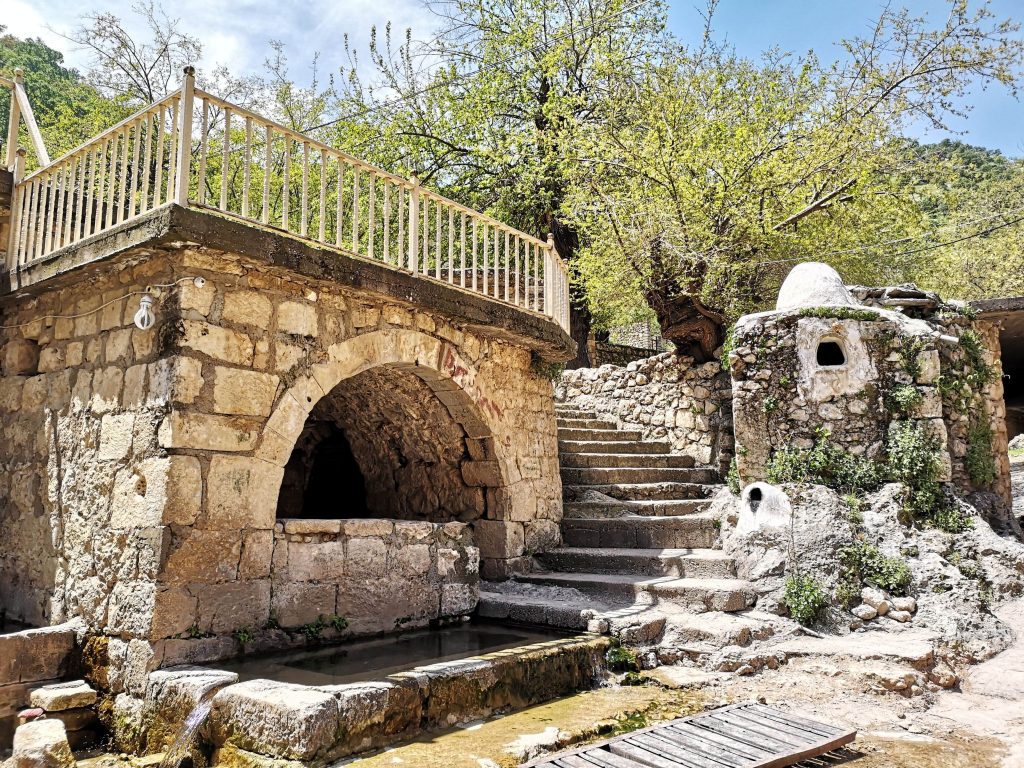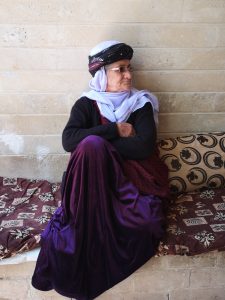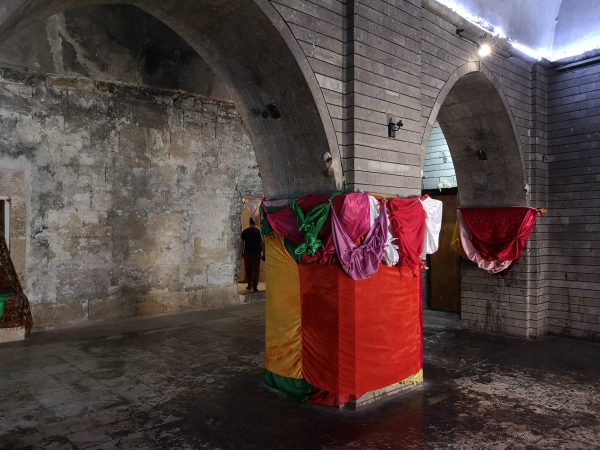The Yazidi religion and Yazidi people came on the world’s spotlight during the ISIS invasion of Iraq on the 3rd of August 2014 as they were forced to flee their villages, escape death, sex-slavery or become stranded on Mount Sinjar. Before those events, few knew about this faith dating from before Christianity and even less people knew about the holy city of Lalish.
Lalish is the holy city of the Yazidis. Their Vatican or Mecca, if you will. It is located above the city of Al-Shikhan, in Dohuk Protectorate, Iraqi Kurdistan. It is a city so holy that all visitors must remove their shoes before stepping foot in the city and must continue to walk barefoot throughout their stay, no matter the season.
Getting to Lalish
From the city of Dohuk, it is a short, one-hour drive south-east to get there. Those coming from Erbil will have to drive two and a half hours. Taxis and drivers can take you there as everyone knows about it. Dohuk itself is on the northwestern part of Iraqi Kurdistan, on the way to Turkey and Syria.
The Yazidi Religion
The Yazidi faith is an ancient religion which shares elements with Zoroastrianism, Judaism, Christianity and Islam. The faith is transmitted verbally, as believers do not have access to their holy book, called the Black Book (Meshef Resh), as it is rumoured to have been taken away. As such, without a clear written reference, one might ask the same question to two Yazidis about their faith and get a completely different answer.
The Yazidi were persecuted by ISIS because they are not “people of the book,” that is, they believe that their prophet is the last prophet to be and believe, for example, that Noah was in fact Yazidi. They have also been accused of being devil worshipers due to their mysterious and closed ways which are often quite different from the three semitic religions. For example, they do not believe that Lucifer was a fallen angel, but in fact believe that he is the most important angel. The Yazidis also befriend black snakes, often seen as a symbol of the devil. In their religion however, the black snake is not a tempter, but in fact saved Noah’s arch by using its body to plug a hole in the ark.
The Yazidi cannot marry people who were born outside of the religion as it is said that the soul of a Yazidi can only be received by the child of two pure Yazidi souls. Marrying outside of their fate is seen as taboo and can be met with the most severe punishments.
With a reputation as formidable fighters and the aforementioned elements that make their faith misunderstood, the Yazidi are often very eager to talk about their faith to strangers and get their pleas known to the outside world. While Lalish has been mostly evacuated and only a few families permanently live there to maintain the site, it is still a great place to meet and interact with them.
The city of Lalish
The city of Lalish has a history of over 4,000 years. But it was when Sheikh Adī ibn Musāfir al-Umawī, himself originating from Lebanon, led his people to escape Muslim persecution at the time that the city picked up most of it’s importance.
Yazidis are expected to make a pilgrimage to Lalish at least once in their life. They also believe that Lalish is the place their souls will go to rest after they pass away. Every year in October, a massive week-long feast, called the Feast of the Assembly is organised. During this time, believers from all over the world gather together to celebrate. It is also an important time to meet other people of their faith and perhaps arrange a few marriages.
When one walks into the village, he or she is greeted by a spring. This spring is seen as the holiest water for the Yazidi. It is drinkable water and should not be used to wash things.
The Yazidis come to Lalish to go within it’s conical temple and pay their respect to the tomb of Sheikh Adi, their Holy Prophet. Within the temple, they use olive oil candles. A few interesting customs take place here, with their meaning often forgotten with the passage of time but the tradition upheld. One such tradition, for example, happens in the entry hall where many scarfs are displayed. People here are supposed to make a wish by making a knot in the scarf and untie another knot. The knot they untie is a wish they have freed, to now be granted, and the knot they made is their own wish, waiting to be released and granted by the next visitor. In the second room, visitors have to try throw a scarf over a rock three times in a row, with their eyes closed, for luck. The locals are often also seen kissing the walls and doors of the temple. It is also important to know that it is taboo to step on any threshold while in Lalish, as it is said that door thresholds are the resting place of angels in this city. At the end of their trip, pilgrims are expected to go in the pantry next to the temple, grab a piece of stale bread and eat it.








